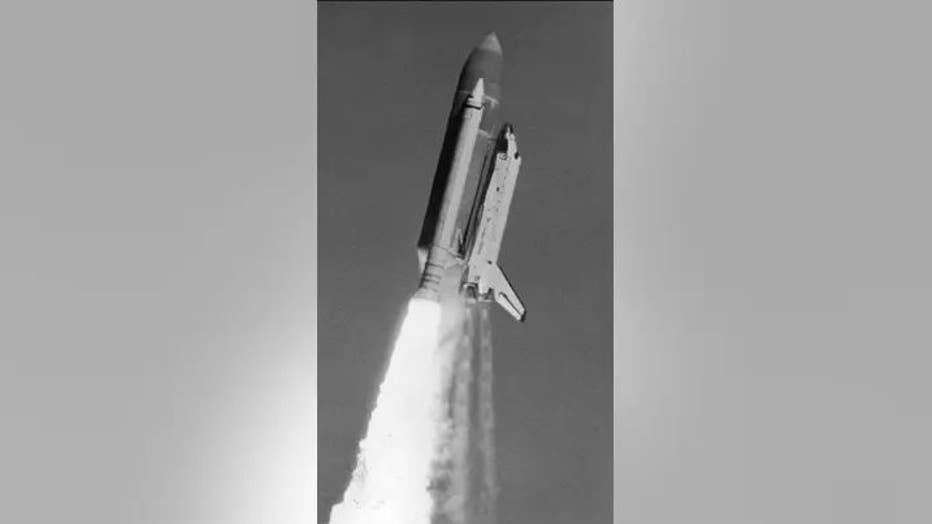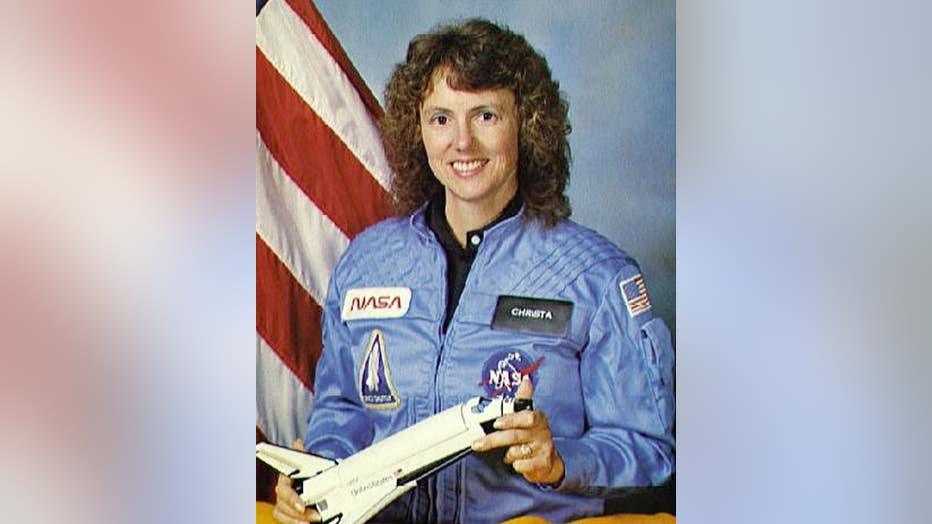Challenger explosion anniversary: 38th Anniversary of NASA's Space Shuttle tragedy, claiming 7 lives
HOUSTON - On this day in history, Jan. 28, 1986, the space shuttle Challenger — scheduled for a routine launch from Cape Canaveral in Florida — exploded after just 73 seconds in flight, killing all seven Americans on board.
The disaster shocked the nation — and led to an immediate pause in the space shuttle program.
The cause of the disaster was found to be the failure of the primary and secondary redundant O-ring seals in a joint in the shuttle's right solid rocket booster (SRB).
While the mission on that fateful day in 1986 was supposed to be like any other routine mission, unusually cold temperatures caused the external tank to explode seconds into takeoff — causing the orbiter to disintegrate and the spacecraft to explode, according to NASA.
SUGGESTED: 3 American troops killed, 25 injured in attack on Jordan base near Syria border
In addition to highly experienced astronauts, the Challenger carried a special passenger on board: teacher Christa McAuliffe.

The space shuttle Challenger lifts off on Jan. 28, 1986. Carrying seven crew members, including teacher Christa McAuliffe, Challenger exploded just 73 seconds into its launch — killing all on board. (Bob Pearson/AFP via Getty Images)
She was a social studies teacher from Concord, New Hampshire, chosen from among 10,000 others who applied to be the first private citizen in space, according to Britannica.
In her application, McAuliffe said she would keep a journal about her experience — and would include sections about her training, the flight experience and her feelings about returning to Earth.
One of the reasons McAuliffe was chosen, apparently, was her teaching experience — and the way she would be able to connect with children across the country.
And that is why, on the day of the launch, scores of students in schools across the country watched as a teacher launched into space for the first time ever.
It was unfortunate timing for young children to watch this particular launch — something President Reagan was worried about when he was deciding how to address Americans later that evening.
Leading up to Challenger
Americans had been visiting space for decades before that — the first time in 1961, with U.S. Navy test pilot Alan Shepard.
Shepard was the second man in space following the Soviet Union’s Yuri Gagarin just a mere weeks before.
By 1969, space travel had progressed to visiting the moon — something the U.S. successfully completed with Apollo 11 that year.
However, with this success, Americans began to fear the government was spending too much on space, according to NASA.
A reusable manned spacecraft then became a focus by the Nixon administration, and the space shuttle program was born.
RELATED: NASA's Ingenuity helicopter takes final flight on Mars

Teacher and space shuttle astronaut, Sharon Christa McAuliffe, is shown in an undated official portrait released by NASA. McAuliffe and the entire Space Shuttle Challenger crew were lost seventy three seconds after launch when a booster rocket faile
The Challenger’s first mission was in April 1983 — and it quickly became one of the most popular spacecrafts to be used in the following three years, according to NASA.
The annual State of the Union address for early 1986 had been scheduled to take place on the evening of the Challenger's launch — but given the tragedy, President Reagan chose to delay the address by a week.
"The future doesn’t belong to the fainthearted; it belongs to the brave."
Instead, that night, Reagan did address the nation but from the familiar Oval Office instead.
Reagan began by saying, "Ladies and gentlemen, I'd planned to speak to you tonight to report on the State of the Union, but the events of earlier today have led me to change those plans."
He went on, "Today is a day for mourning and remembering. Nancy and I are pained to the core by the tragedy of the shuttle Challenger. We know we share this pain with all of the people of our country. This is truly a national loss."

CONCORD, NH - JANUARY 28: Mandana Marsh holds her daughter, Molly, 4, as they watch television coverage hours after the explosion of the space shuttle Challenger inside their home in Concord, N.H., Jan. 28, 1986. When her mother explained what happen
In his speech, Reagan also expressed a willingness to remain steadfast in the pursuit of space flight — but also, he focused on the families of those who were aboard the Challenger and on the children who were watching the flight from their classrooms or homes.
"I know it is hard to understand, but sometimes painful things like this happen," Reagan told the country that night.
"The future doesn’t belong to the fainthearted; it belongs to the brave," Reagan also said.
"The Challenger crew was pulling us into the future — and we’ll continue to follow them."

On this day in history, Jan. 28, 1986, the Challenger spacecraft exploded — killing all seven passengers aboard. That evening, President Reagan addressed the nation from the Oval Office about the tragedy. (Getty Images)
The next mission launch was over two-and-a half years later, in September 1988 — named the "Return to Flight" mission.
The mission lasted for four days and included 64 orbits around the planet.
It ended with a successful landing at Edwards Air Force Base in California, according to NASA.

